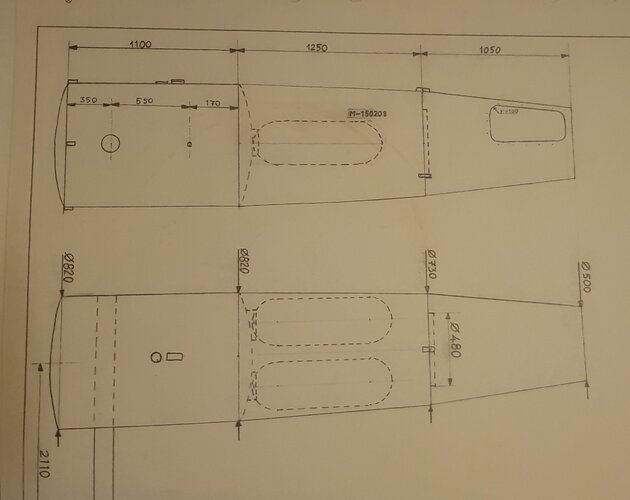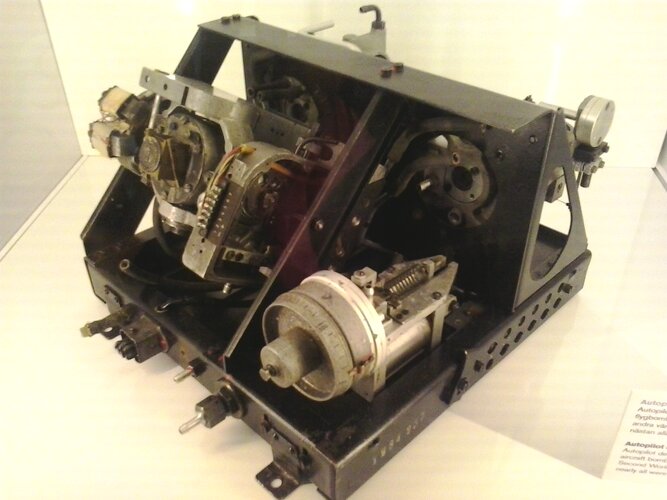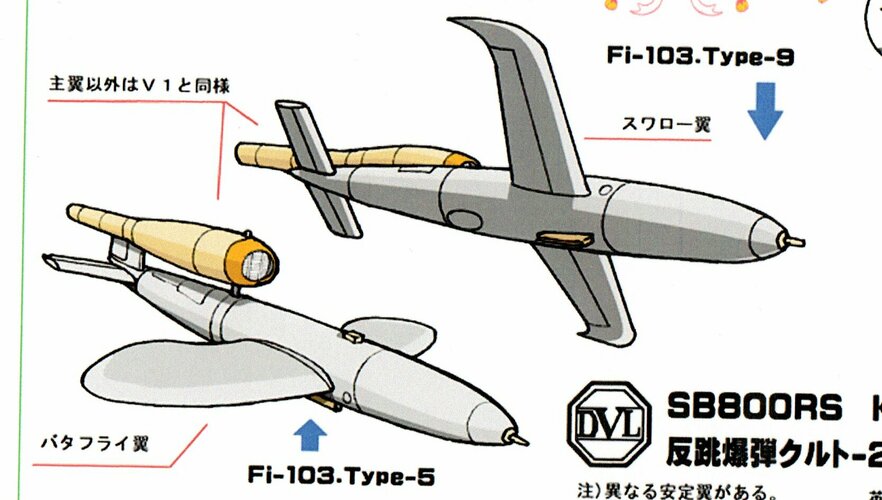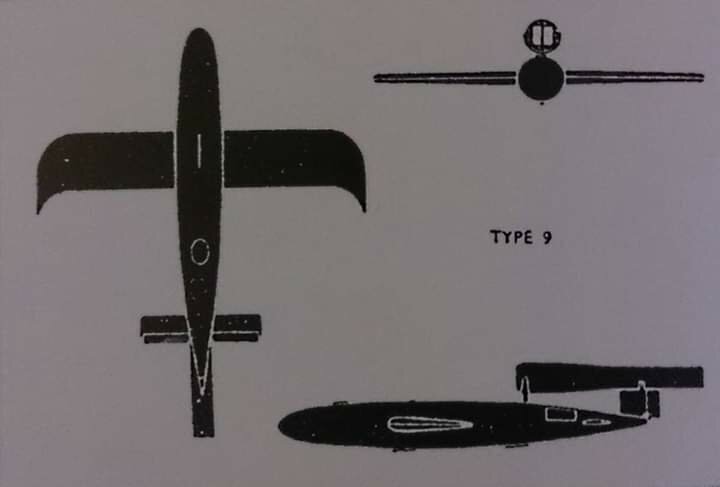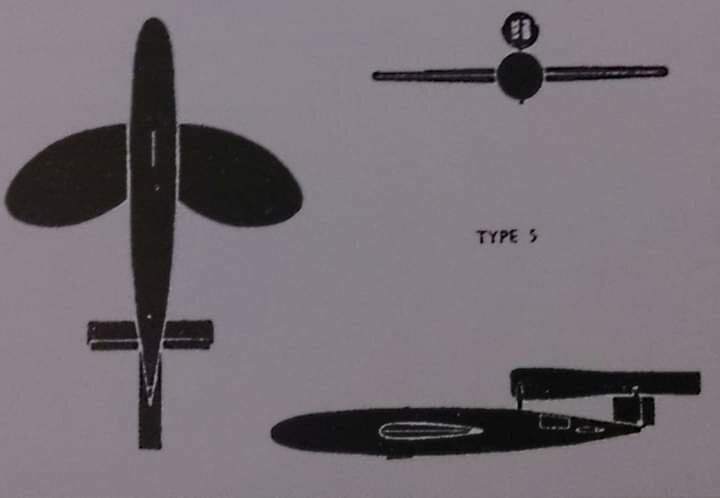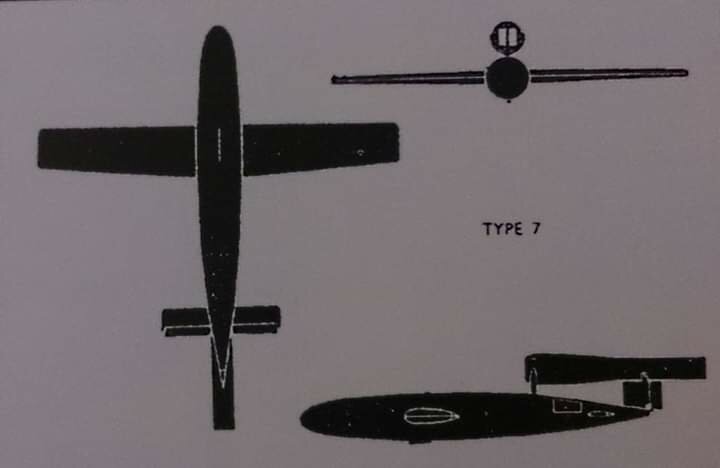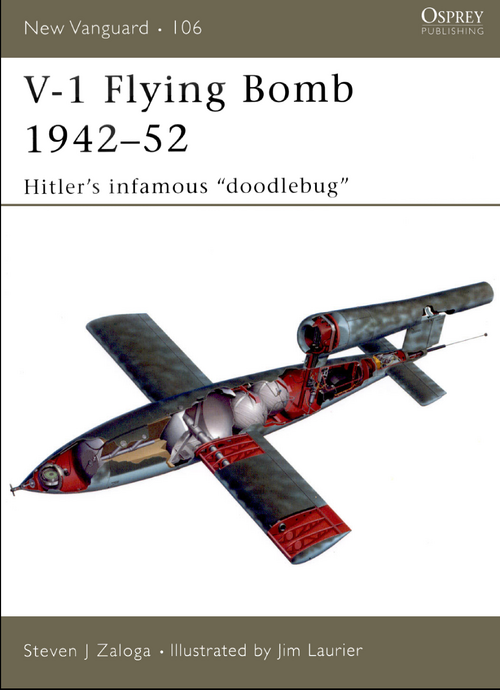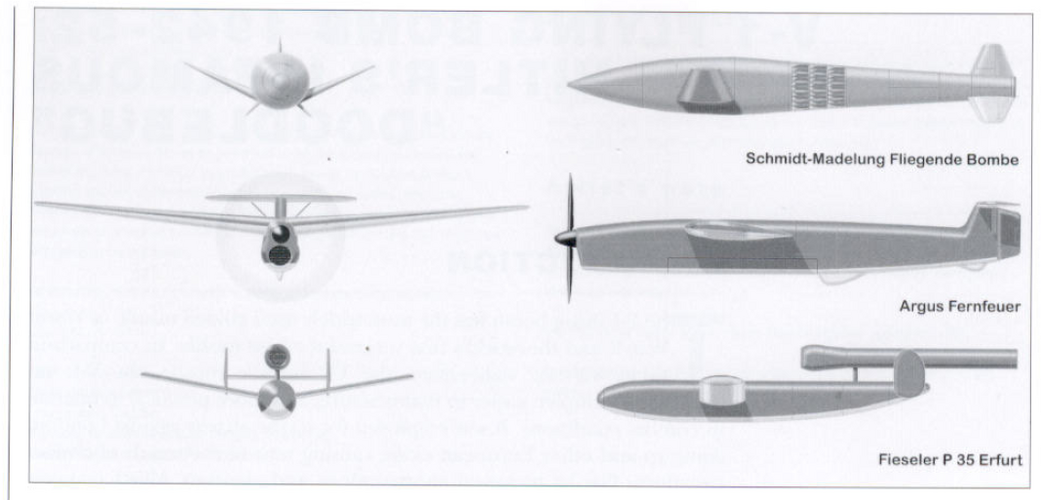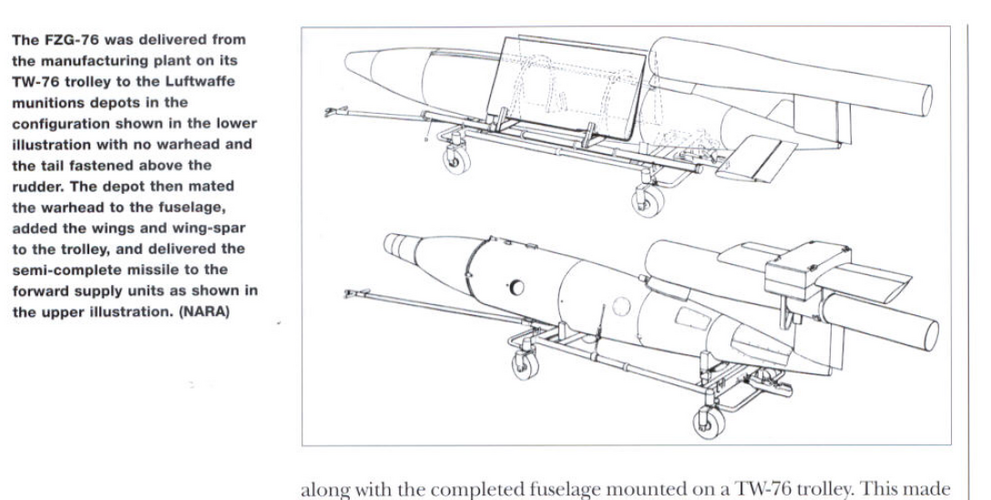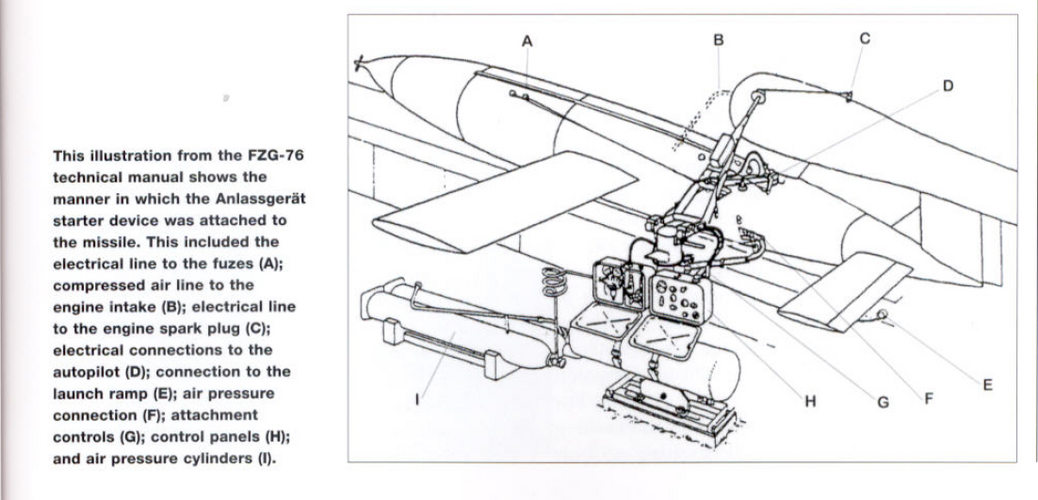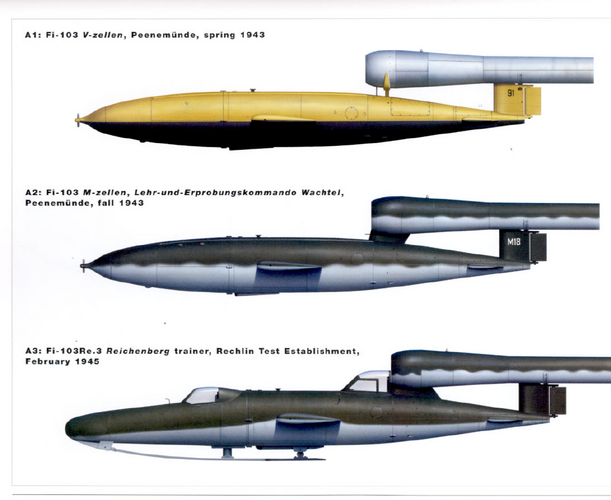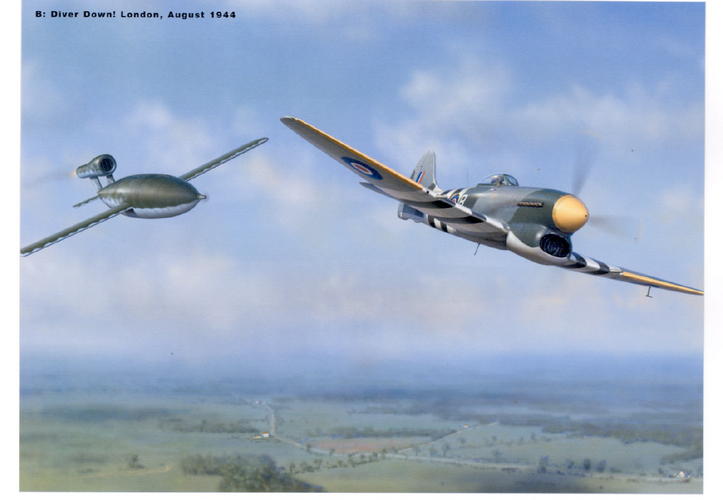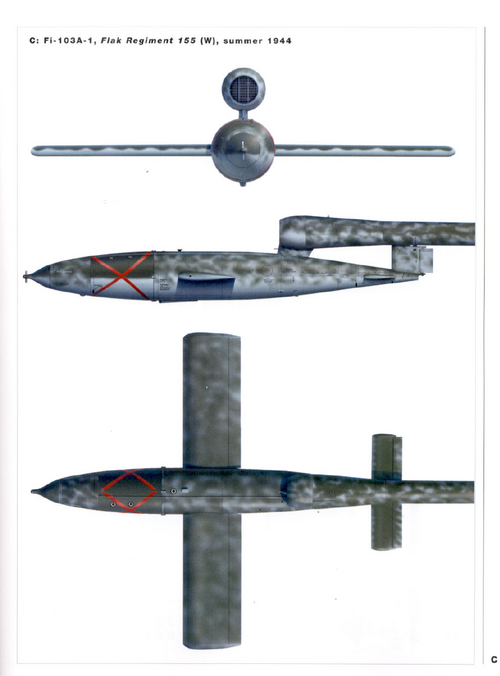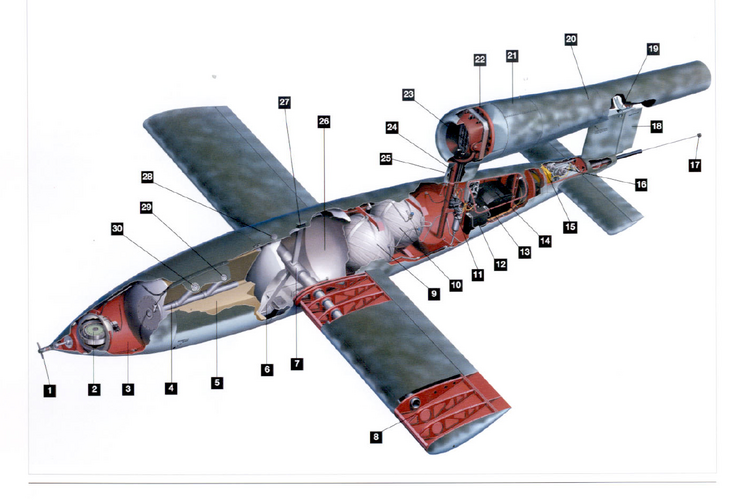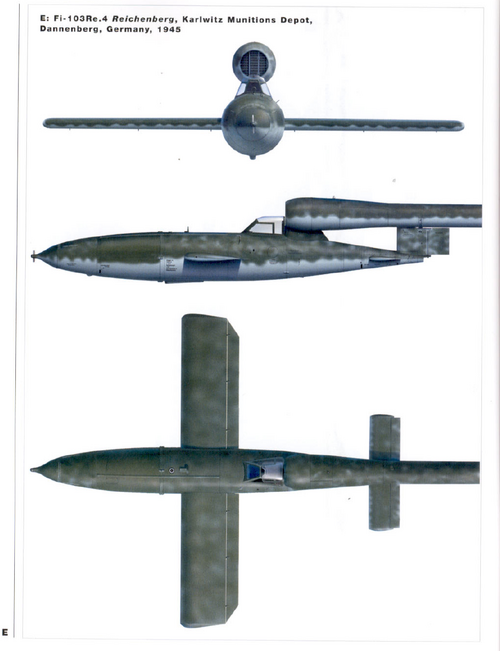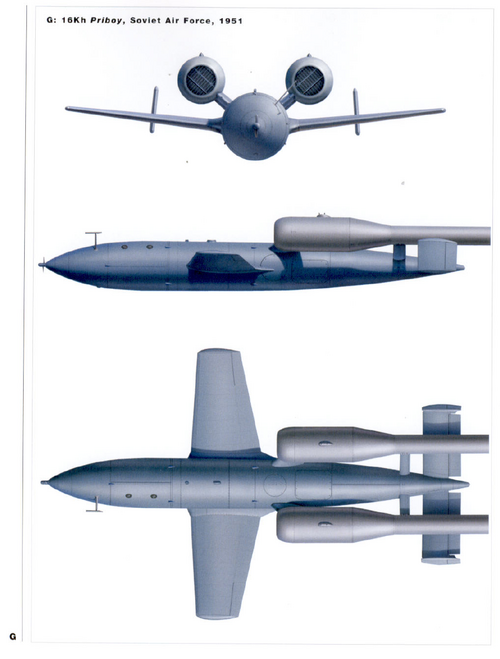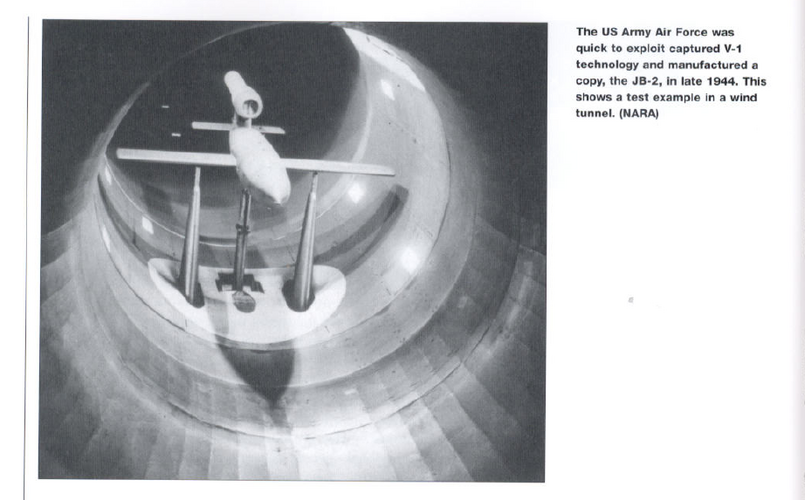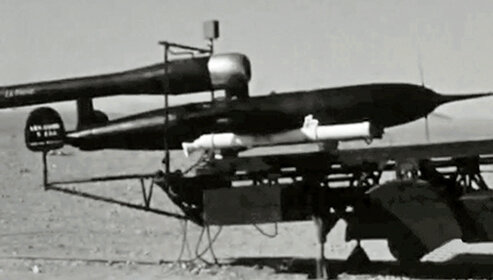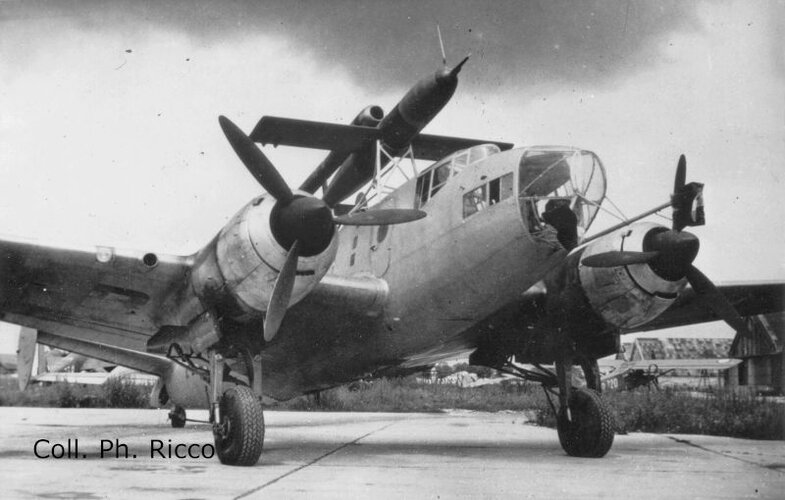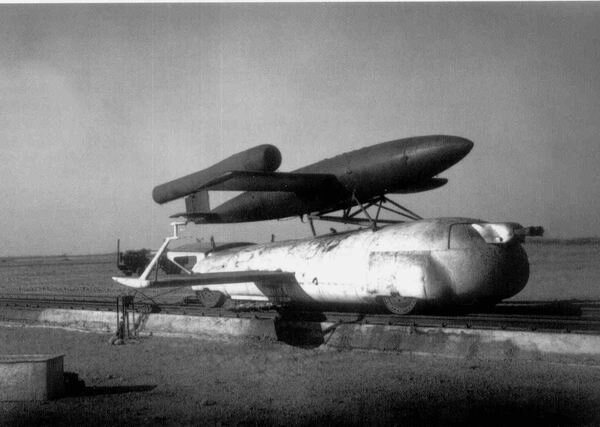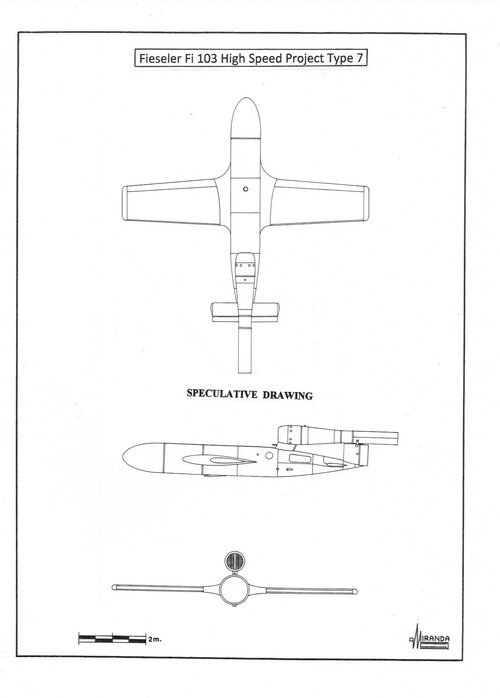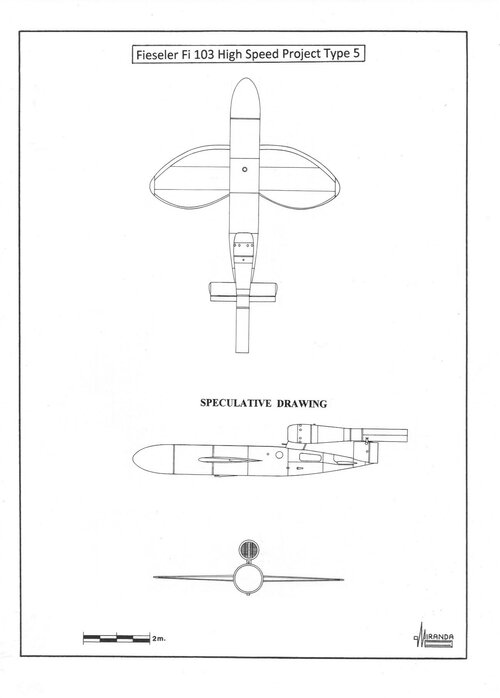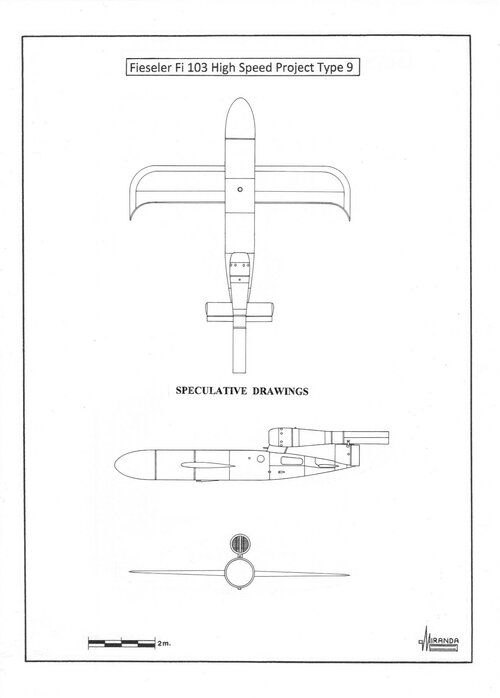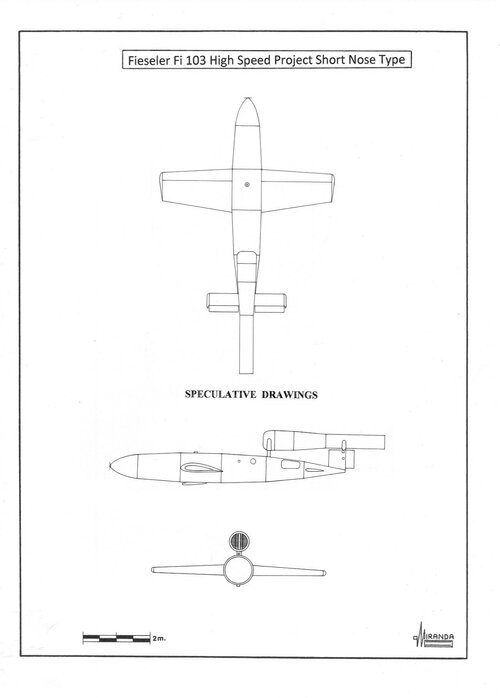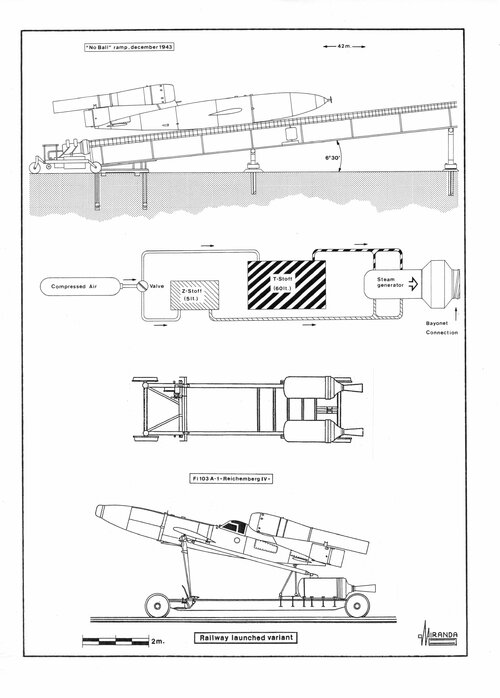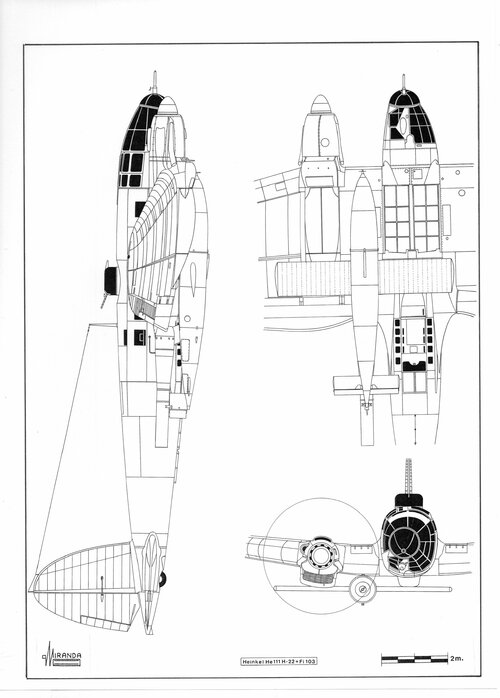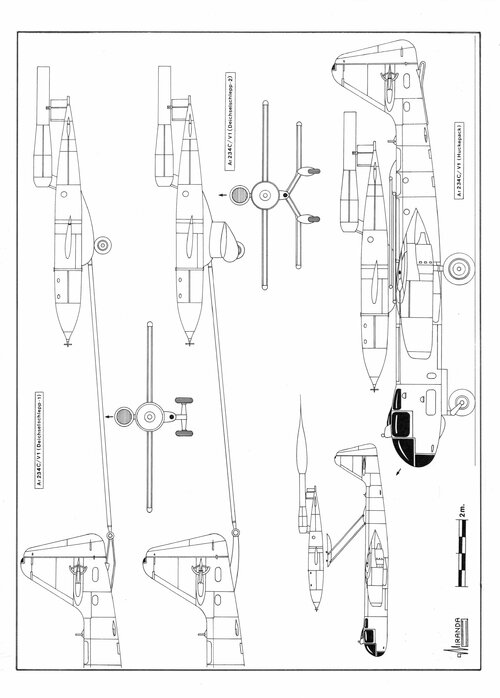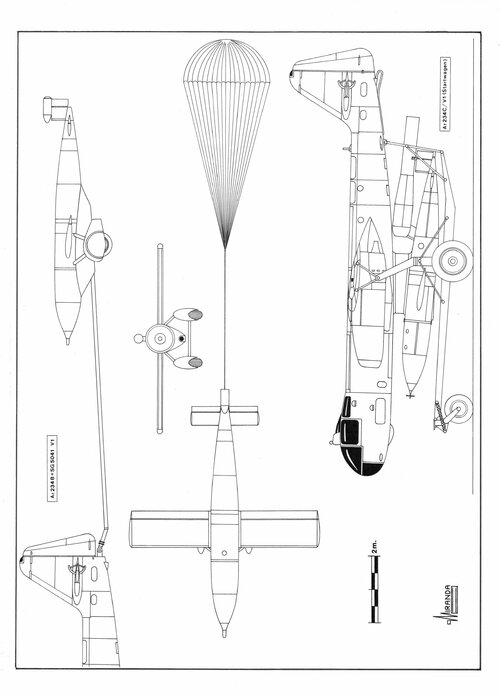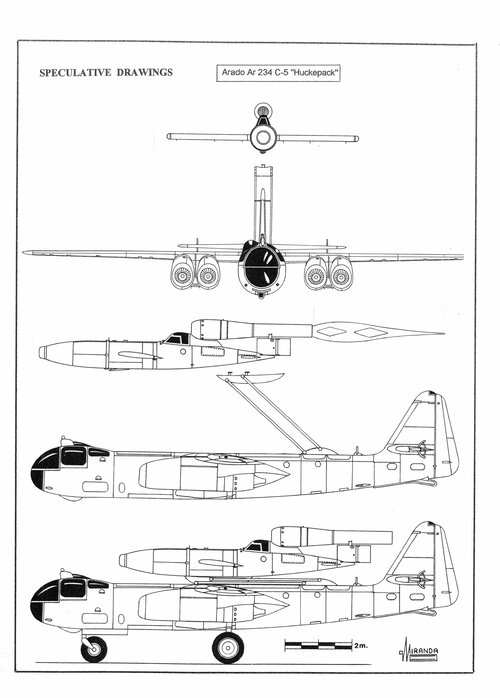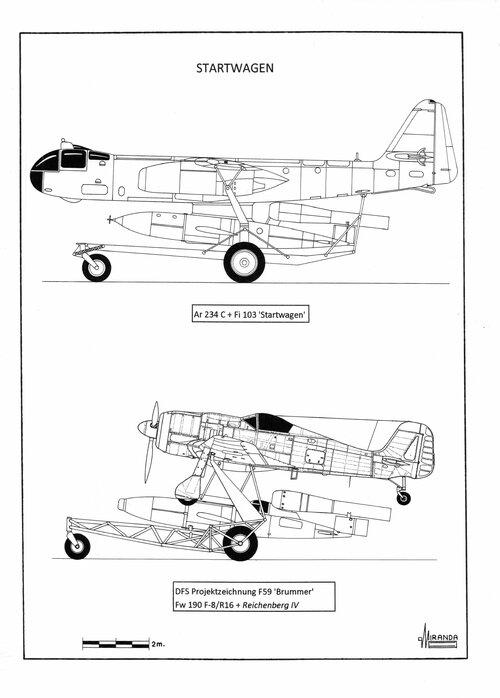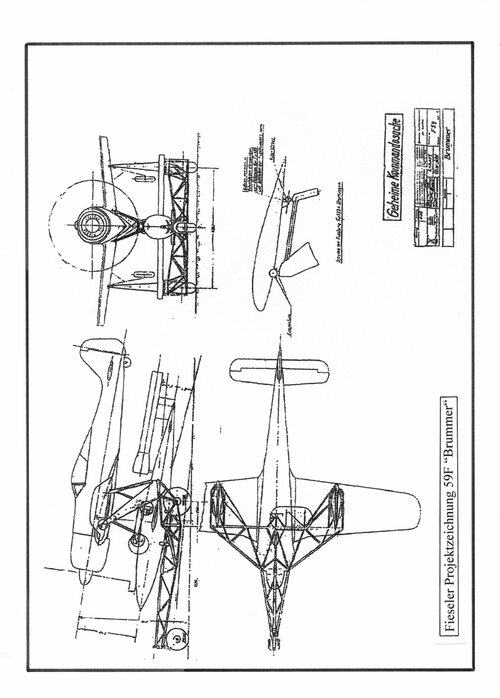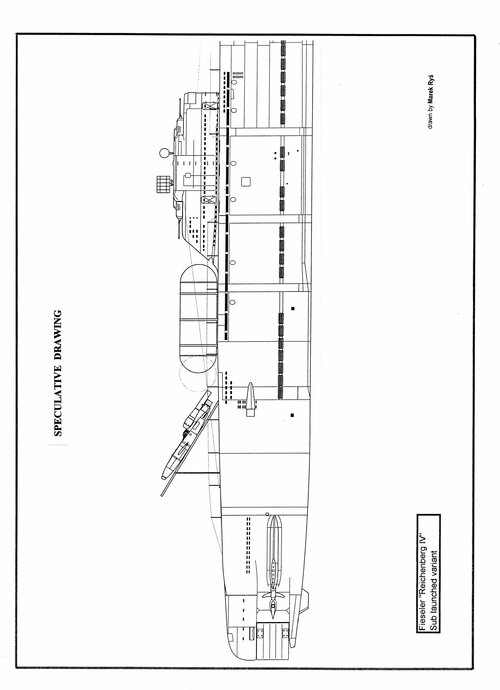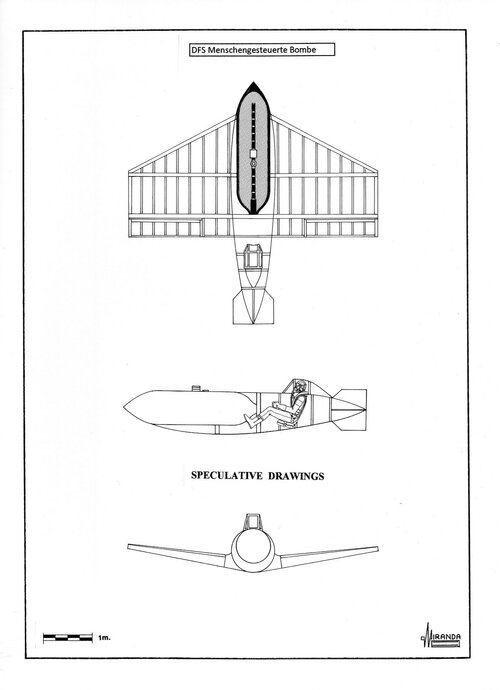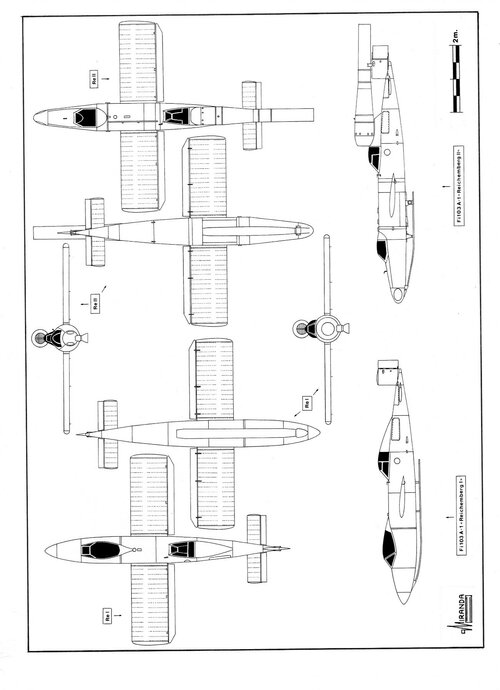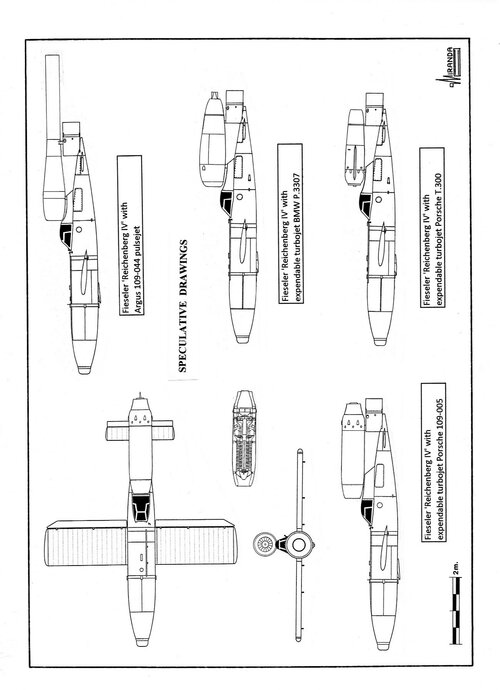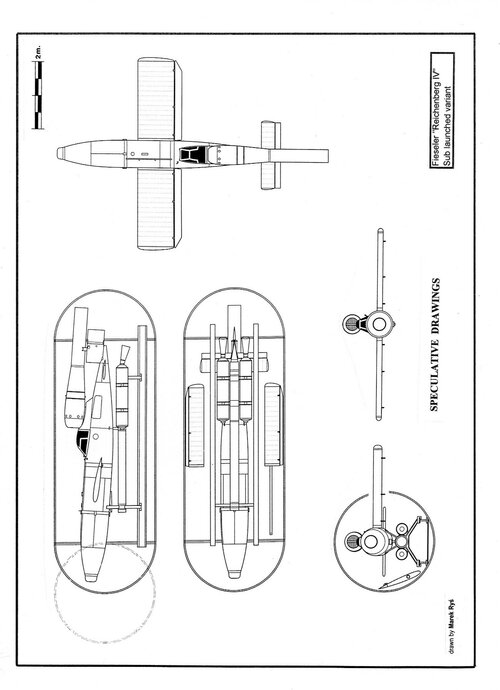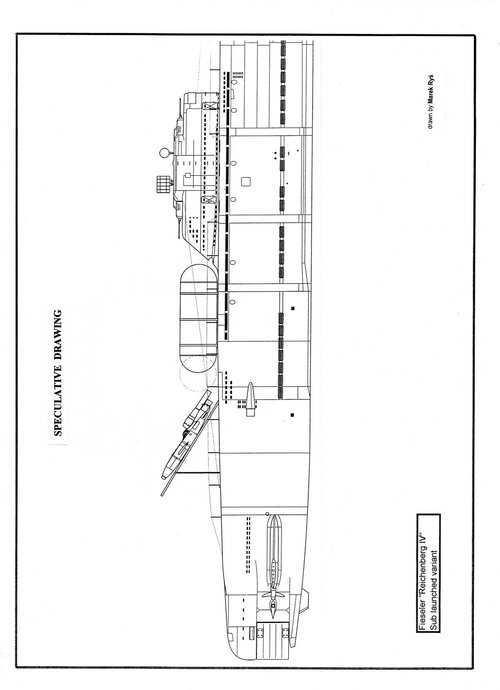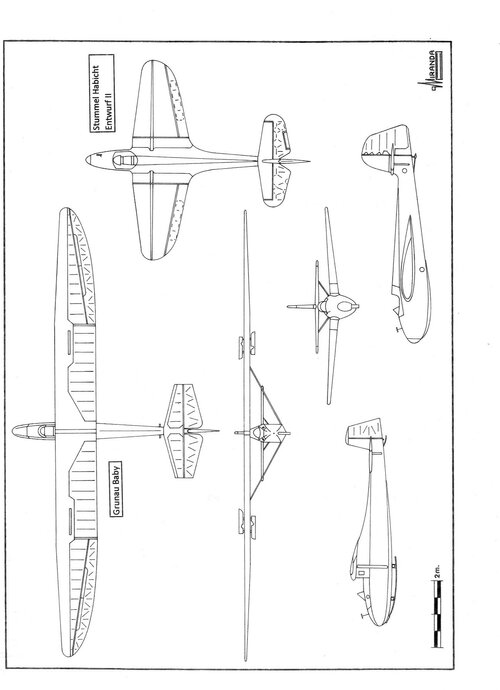In 1943 it was proposed to build a television-guided version of the V-1 missile to compete with the Henschel Hs 293D missile, but in 1945 the Allies electronic technology was so advanced that they could interfere any German radio-control system.
Only those who could be fitted with primitive wire-guidance devices, like the flying bomb Henschel Hs 293 A, the air-to-air missile Rhursthal Kramer X4 or the X7 antitank rocket of the same firm, survived. But the results achieved in combat using these systems were not too good; sometimes the cable broke or lacked the necessary length to avoid the effects of the naval AA, with the dangerous disadvantage that the launcher plane was forced to fly on a straight line while guiding the missile.
After the failure of the Messerschmitt Me 328
schnellbomber, the Germans realized they lacked the means to stop the Allied invasion that they expected would take place in the sector of Calais by mid-1944. In May of that year the first
Mistel composite-bombers entered service, but they could only be used against static targets because during their final dive they were controlled by an automatic pilot only.
The Axis only possibility was using suicide pilots.
By mid-1943, Hanna Reitsch, who had participated in the testing program of the Messerschmitt Me 328, piloting one of the prototypes and was greatly affected by the bombing of German cities, met with Otto Skorzeny and Erich Lange to support his idea of using a piloted version of the V-1 as a last ditch weapon.
In August 1942, a group of former glider pilots of the
Sturm Abteilung Koch meeting in a Berlin Flying Club had come to the conclusion that the
Ballistikfrei piloted glider-bombs were the only weapons that could guarantee the German victory. Known unofficially as
Reichenberg Commitee, this group of radical ideas that was represented before the Führer by Hanna Reitsch was gaining influence with each defeat of the
Wehrmacht in Russia and Africa, with each U-Boat sunk in the Atlantic and with the devastation of Hamburg by Allied bombers.
In November 1943 the S.O. concept was discussed by technicians, scientists and
Luftwaffe officers during a secret conference at the
Akademie der Luftahrtforschung, under the leadership of Adolf Baeumker.
In 2014 the web
www.deutscheluftwaffe.de published a very crude sketch, dated October 1943, which represents a
Menschengesteuerte Bombe (manned flying bomb) devised by the
Reichenberg Commitee. Appears to be a scaled up version of the glider bomb DFS D-II (Pe)
Seehund built with a standard SC 1800 to which had been added a Lippisch type delta wings and 5 m wingspan, a cockpit and flight controls. The attached drawing scale is based on such information.
The failure of the
Luftwaffe during the D-Day, the success achieved by Japanese suicide pilots in the Battle of Leyte Gulf and the cancellation of many projected missiles, led the OKL to seriously consider the
Selbstopfermanner (S.O.) units of self-sacrifice pilots in early 1945.
The successes achieved by the
kamikazes in the Far East strengthened the position of those in favour of creating S.O. units and the OKL finally authorized the conversion of several V-1 missiles into piloted bombers under the codename
Reichenberg.
The work was undertaken by DFS-Ainring with the installation of a cockpit, instruments and flying controls in the space formerly occupied by the two spherical air bottles. Ailerons also were fitted in the wing trailing edges and the surface of the rudder doubled to improve maneuverability. In the prototype, the fuel tank and the warhead were replaced by sand bags of equivalent weight.
The first aircraft was transformed in just fourteen days, initiating flight tests Lärz, slung under the port wing of a Heinkel He 111 H-22. After launch, the pilot lost control and the
Reichenberg turned was destroyed. The same happened with the second prototype when attempting a landing without flaps at more than 220 km/h. The system of sand ballast was replaced by a water tank that could be emptied in flight to lighten the plane before landing, although sometimes the discharge valve froze, as it happened to Hanna Reitsch with the third prototype during a launch from 18,000 ft. After making a successful flight test on the pulsejet in the Karlshagen Erprobungsstelle, it was decided that the
Reichenberg would enter mass production.
With a max diving speed of 800 km/h and a cockpit design that prevented the installation of an ejector seat, no one doubted that it was a suicide project. But the OKL insisted that S.O. pilots were trained in landing maneuvers, for the sake of formality.
DFS build three versions of training: a two seat unpowered glider based on the airframe of a Fi 103 A-1 called
Reichenberg I, a pulsejet powered two seat called
Reichenberg II and a pulsejet powered single seat called
Reichenberg III for advanced training. All these variants were equipped with ailerons, sprung skid, landing flaps and were reusable. The
Reichenberg I was flown at Rechlin on September 1, 1944.
The S.O. version, named
Reichenberg IV, was a single-seat suicide bomber used the fuselage, engine and tailfins of the Fieseler Fi 103 B-1, with 5.37 m wingspan wooden wings and
Amatol 39A warhead, powered by an Argus As 109-014 pulsejet with 366 kg thrust at sea level and 254 kg at 3,000 m, 640 km/h maximum speed and 330 km range.
In this version, the two spheres containing the compressed air were replaced by a smaller one located behind the cockpit.
The instrument panel housed clock, airspeed indicator, altimeter, turn and bank indicator, warhead arming switch and gyro-compass. Energy was provided by a 24-volt battery and 3-phase inverter. There was no radio, only the intercom connection with the carrier aircraft. Three dive angle reference lines (white-red-white) were painted on the canopy side window.
The launch system was dangerous and ineffective. The Heinkel He 111 H-22 should take off with a large asymmetric load of 2,250 kg which would mean the loss of both aircraft in the event of failure of the port engine.
The S.O. pilot remained aboard the
Reichenberg since before docking under the Heinkel and the cockpit could not be opened until after launch because of the relative position of both planes.
In their quest for more efficient delivery systems, the
Luftwaffe ruled out the
Brummer for being unsafe and for the short range of the mother plane.
Deichselschlepp could only be used by experienced pilots and
Startwagen required the use of airstrips in good condition, very rare at this time because of Allied bombing.
Huckepack seemed the best option, but could not be used due to the small number of available Arado Ar 234.
The accuracy of the
Reichenberg allowed the
Luftwaffe to destroy, for the first time in the war, with security and economy of means all kinds of high valuable targets like warships, aircraft manufacturers, military HQ, munitions depots, bridges and power stations.
It was suggested that one
Reichenberg IV would be carried under one Heinkel He 177 to attack the industrial Soviet centres of Kuibyschew, Tscheljabinski and Magnitogorks.
It was also considered its use for political purposes, based on the idea that an attack carried out against the Buckingham Palace, the Houses of Parliament or the White House could create the right situation for some kind of peace agreement.
For the attack on Washington, proposed on July 24, 1943, it would have been necessary to modify a number of U-boats Type XXI with a
Reichenberg IV housed in a watertight container located on the rear deck behind the conning tower.
The problem with Type XXI is that they were not big enough to use the same system of steam catapults installed on Japanese submarines of the
Sen-Toku series. Nor was it possible to use the catapult Madelung KL 12, designed for launching unmanned missiles, because its length was 42 meters and its terminal speed of 105 m/s would make the pilot lose consciousness.
The solution proposed by the Dipl. Ing. Willy Fiedler consisted of a folding ramp, only 10 m. length, which was originally designed to launch the
Natter. With the use of two RATO rockets of the Schmidding 109-533 type, a softer thrust would be obtained until reaching the starting speed of the pulsejet. The article entitled 'Robot bombs attacks here held probable' published on January 9, 1945 in the New York Times showed that the Allied intelligence services considered such attacks feasible.
After the war, the mastermind of the plan worked designing several U.S. Navy submarine launch systems for the
Loon and
Regulus missiles.
The 5./KG200 was the
Luftwaffe unit responsible for the formation of a first batch of 70 S.O. pilots. The training program included a number of flights in elemental gliders of the
Grunau Baby type, then started to use the
Stummel Habicht (a single seat version of the aerobatic glider DFS
Habicht) with reinforced airframe and wingspan reduced from 13.6 to 6 m. The
Stummel of short wings could fly at 300 km/h in diving, but it was dangerous at landing because of its stalling speed of 80 km/h. At the next level of training, the pilots got familiar with the flight controls of the
Reichenberg I, performing various take-off towed aloft by a Henschel Hs 126. The ignition of the pulsejet was practiced with the
Reichenberg II two seat trainer, making a shallow dive to reach the ignition speed of 400 km/h.
In the final stage, the pilots performed a flight in the single seat version of the
Reichenberg III which included the simulation of a terminal dive to become familiar with the tightening of the flight controls at high speeds.
It was hoped that the suicide version of the
Reichenberg IV could use various types of interchangeable warhead to attack different kinds of targets as effectively as possible. For antiship usage, DFS technicians had planned to use two types of warhead: A SHL 800 hollow-charge of 785 mm in diameter (a 40% scaled-down version of the SHL 3500 used by
Mistel bombers) was used for attacks on heavy armored capital ships; another option was a torpedo-bomb BT 1400, devoid of the rear section, with plywood aerodynamic fairing that consisted of two halves that separated after impacting water and released the warhead.
According to some authors the BT 1400 could have been replaced by the warhead of the glider torpedo L.11
Schneewittchen or by the warheads of the
Wasserlaufkörper-Zuckerhütte type with 640 kg of
Amatol 39 A that had been developed for the anti-ship Henschel missiles of second generation. The Hs 293 C had a 'No. 2' warhead of 3.58 m in length and 0.58 m in diameter and the Hs 294 had a 'No. 4' warhead of 4.4 m and length and 0.67 m diameter.
In November 1944 there was no point in trying to destroy the allied invasion fleets and the naval versions of the
Reichenberg IV were left aside to enhance the strategic bombing versions.
On February 24, 1945, only 34 S.O. pilots that had been selected between 15,000 volunteers, had completed training due to fuel shortages.
The
Reichenberg IV program was cancelled on March 15 without being used operationally because the
Luftwaffe preferred to use the
Mistel for their last bombing missions. At the end of the war in Europe, the Allies discovered about 500 airframes of
Reichenberg IV in different stages of construction in the
Pulverhoff VI assembly plant of Dannenberg. At least 175 of them were ready for combat.
The
Reichenberg V was the project of a single seat trainer, based on the
Reichenberg III to be used by the pilots of the new generation of fighters and fighter-bombers powered by pulsejets (Heinkel He 162 A-10 and A-11, Heinkel P.1077
Romeo and Junkers EF 126) with which the OKL hoped to continue the fight in 1945.
DFS/Fi 103 A-1/Re I
Reichenberg I technical data
Two seat training glider with steel structure and coating, wings with tubular single spar and ailerons, airframe from a Fi 103 A-1 with sand ballast and landing skid.
Wingspan: 5.75 m, Length: 7.32 m, Height: 1.2 m.
Henschel/Fi 103 A-1/Re II
Reichenberg II technical data
Two seat training airplane with sand ballast and landing skid, powered by an Argus As 109-014 pulsejet with 366 kp thrust at sea level and 254 kp at 3,000 m.
Wingspan: 5.75 m, Length: 8.35 m, Height 1.8 m.
Henschel/Fi 103 A-1/SR.III
Reichenberg III technical data
Single seat training airplane with 849 kg of water ballast and landing skid, powered by an Argus As 109-014 pulsejet with 366 kp thrust at sea level and 254 kp at 3,000 m.
Wingspan: 5.75 m, Length: 8.5 m, Height 1.8 m. Max speed: 644 km/h. Launch plane: Heinkel He 111 H-22.
Fieseler Fi 103 B-1 / Re IV
Reichenberg IV technical data
Single seat suicide bomber with wooden wings, without landing skid, powered by an Argus As 109-014 pulsejet with 366 kp thrust at sea level and 254 kp at 3,000 m.
Wingspan: 5.75 m, Length: 8.28 m, Height 1.8 m. Max speed: 800 km/h at 2,440 m.
Range: 330 km. Launch weight: 2,250 kg. Launch plane: Heinkel He 111 H-22.
Anticipating the emergence of a second generation of faster missiles, propelled by the new Argus 109-044 pulsejet with 660 hp thrust, the British designed a version of the Hawker
Tempest with the monstrous 3,200 hp Rolls-Royce
Eagle engine and the Americans built the XP-47J
Superbolt, an advanced version of the
Thunderbolt capable of flying to 813 km/h, the highest speed recorded in level flight by any propeller aircraft during the Second World War.

